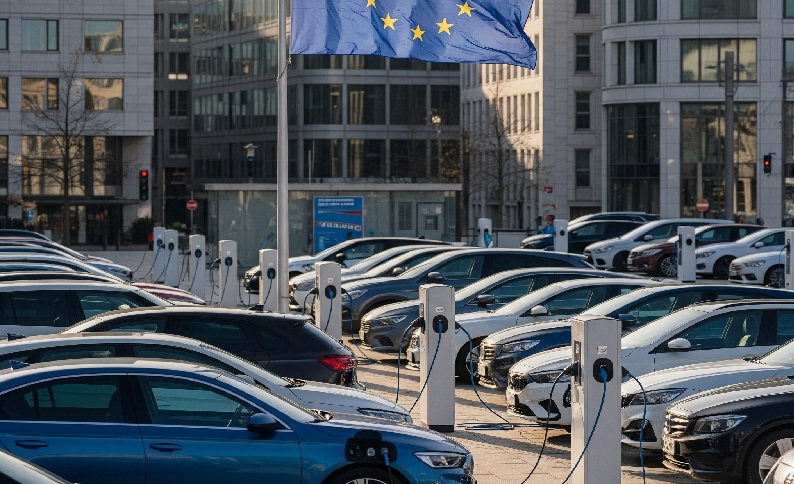The Chilean capital is expanding its electric fleet with 308 high-standard buses that will operate in Puente Alto, La Florida, Lo Espejo and Pedro Aguirre Cerda between July and August.
The delivery—led by Minister of Transport Juan Carlos Muñoz and President Gabriel Boric—marks the first phase of the Mobility Network Renewal Plan, which will introduce 1,800 electric buses and consolidate Santiago as the city with the largest e-bus fleet outside China.
This expansion brings the metropolitan total to 3,400 units in operation and sets the stage for a projected 68% electrification by March 2026: seven out of ten buses will be zero-emission, with a total fleet of 4,400 vehicles.
Simultaneously, 1,600 diesel buses that have reached the end of their service life will be decommissioned, reducing the average fleet age from 6.2 to 3 years.
“Santiago is a global benchmark. Our electric network spans all districts, from Maipú and Puente Alto to Las Condes,” Boric highlighted during the ceremony.
How is the bus expansion financed?
The programme combines public funding, private investment from operators (Metbus, STP, Redbus and Vule), and green loans from multilateral banks.
Each BYD or Yutong unit costs around US$310,000, but operational costs are 35% lower compared to a Euro VI diesel bus, thanks to the lower nighttime kilowatt-hour rates contracted with Enel X and Engie.
The Ministry of Finance will issue a green sovereign bond in 2025 to support the next batch of 900 buses.

The arrival of the new fleet requires a doubling of charging infrastructure.
From the current 29 electro-terminals supplying the network, the total will rise to 56 by the end of the year—a 93% increase.
Notable sites include the Peñalolén-Quilin (15 MW) and San Bernardo (12 MW) terminals, both capable of simultaneously charging 120 units using 150 kW CCS2 connectors.
All supply contracts guarantee 100% certified renewable electricity, which is essential for maximising CO₂ reduction.
Environmental and social benefits
Each electric bus prevents 90 tonnes of CO₂ emissions annually and reduces perceived noise levels on the road by 30 dB.
With 4,400 units, the capital will cut 400,000 tonnes of CO₂ per year, equivalent to removing 150,000 private cars from circulation.
Moreover, electric operations require 20% more specialised technical staff, generating green jobs in battery maintenance and power systems.
Seven cities—Antofagasta, Temuco, Valparaíso, Concepción, Rancagua, Copiapó and Arica—already operate electric buses. Copiapó is set to become the first Chilean city with a 100% electric fleet in the third quarter of 2025.
The Ministry has launched co-financing schemes allowing regional governments to cover up to 80% of CAPEX for each e-bus and charging depot, provided they meet the Red standards (universal accessibility, air conditioning, and CCTV cameras).
The decommissioning of diesel buses includes a certified scrappage programme that recovers steel, aluminium and catalytic converters.
At the same time, a tender will be launched for recycling spent LFP and NMC batteries, in line with the Extended Producer Responsibility (EPR) Law. The University of Santiago is developing a pilot project for second-life use of battery packs for stationary storage in public microgrids.
Technology and challenges
The new buses come equipped with air conditioning, USB ports, Wi-Fi, and real-time information displays.
A “geofencing” system adjusts speed in school zones and monitors energy consumption. Boarding data will be integrated with the Red app and Google Maps to estimate each journey’s individual carbon footprint.
As for short-term challenges, local media highlight:
- Technical fare: The rise in global financial costs is putting pressure on the state subsidy; the Ministry of Finance will review values in December.
- Training: An additional 1,200 drivers are needed; Sence has launched scholarships for A-3 licences with a focus on electromobility.
- Global supply: High demand for buses in emerging markets could strain deliveries in 2025–2026. The Ministry of Transport is diversifying suppliers to include Foton and King Long to secure timelines.
With 4,400 electric buses and the renewal of 230 km of dedicated bus lanes, Santiago aims to cut average travel time by 25% and position itself as Latin America’s capital of sustainable mobility.
The Chilean model is already inspiring projects in Bogotá, São Paulo and Mexico City, reaffirming that the electric transition in mass transport is a tangible reality when political will, funding, and infrastructure planning converge.
DISCOVER MOBILITY PORTAL DATA
Discover Mobility Portal Data, a new exclusive market intelligence platform offering reliable data and key reports to support smart decision-making across the automotive sector — covering both combustion and electric vehicles, as well as charging infrastructure.
Research, trend analysis, and neatly organised statistics presented with clarity and precision, alongside up-to-date insights — all just one click away. With Mobility Portal Data, good decisions are on the horizon.
READ MORE
-
ChargeEuropa CEO: “Advertising earns six times more than EV charging”
ChargeEuropa provides multimedia services to leading brands like NETFLIX and Burger King, generating extra revenue and enabling entry into new markets.
-
EU hits 1 million BEVs: which countries are driving the growth?
Between January and July, a total of 1,011,903 new BEVs were registered, representing a 15.6% share of the total vehicle market.
-
Zaptec launches the UK’s first V2G-Ready AC Charger
The Zaptec Go 2 is a 3-phase, 22kW AC charger that’s V2G-ready, OCPP-compliant and MID-meter certified – future-proofed for the UK’s evolving EV landscape.









